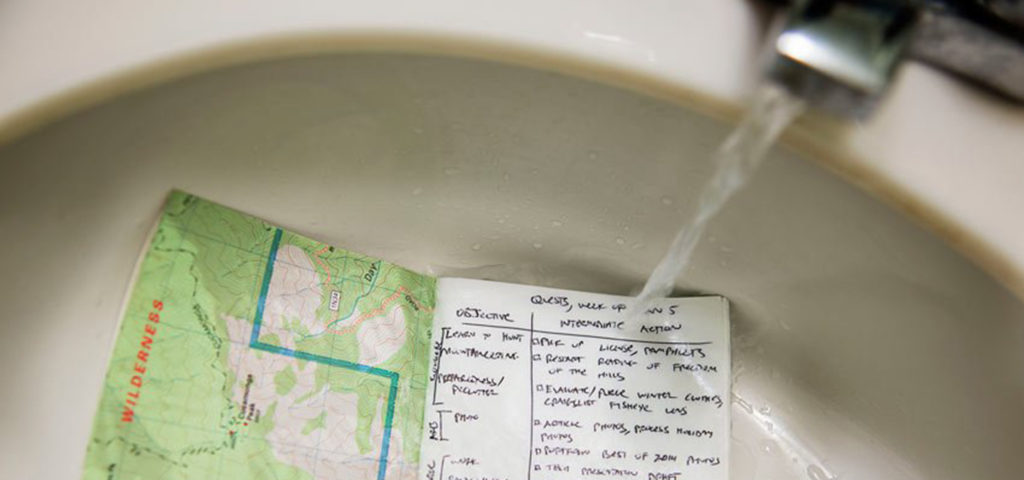Toward the end of every backpacking season, I find myself to have accumulated a small stack of topographic maps. As I evaluated the probability of revisiting some of these places, I figured that I most likely wouldn’t be visiting the area again soon. On the other hand, I didn’t want to throw away a $10 map after one or two uses.
If you have a supply of waterproof, tear-resistant maps that won’t see the light of day again, why not repurpose them into field notebooks? It’ll save you a few bucks a year, but the real fun is journaling your new adventures using the maps of your past ones.
What You’ll Need
- An old waterproof topographic map.
- A knife. If you don’t own a craft knife like an X-ACTO, just use any reasonably sharp knife.
- A cutting mat, but if you don’t own one, you can just use a kitchen cutting board.
- A straight edge ruler, but if you don’t own one, you can use the edge of another folded up map.
- A stapler.
Instructions
Unfold your map and use your knife to cut along the pre-existing creases using your ruler.
Next, pick a cover page. You have a few options:
* Go with whatever is the most compositionally and graphically pleasing.
* The page with the summit or camp that triggers the best memories.
* Or simply use the cover page of the map, which is what I did in this example.
Stack your pages up and fold it in half. Flip through it to give it a preview. If your map is single-sided, your notebook will most likely have one blank page for text on one side and the graphic of the map on the other, though some pages will be completely blank and others will may have the topographic on both sides.
Stick your unbound map into the stapler, gently curling over one side if need be and bind with as many staples as you please–I do two or three. If you’re the more meticulous sort, you can trim the uneven edges of the page real tidy, but I like the threadbare feel of my notebooks.
Your notebook will most likely have a squareish shape. If you don’t like this, you can trim it further to size. I used a Moleskine Volant notebook as a template so it would fit into my Form Function Form Architect Wallet, which is built around that particular notepad.
That’s it. Now get back to your other maps and start planning your next adventure!
Editor-in-Chief’s Note: Jeff lives in Los Angeles and serves as our resident Eastern Sierra correspondent. He’s currently buckling down for the next Sharknado, but in the meantime, throwing the occasional blog post up.
